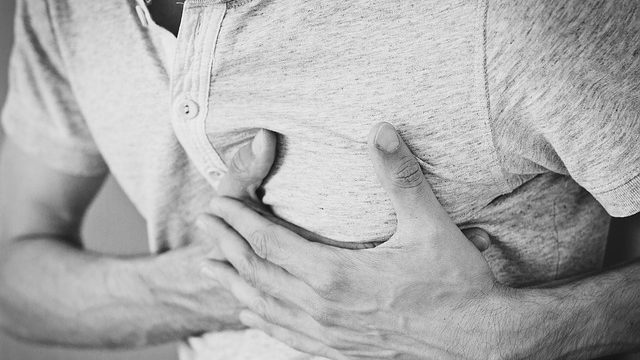
- A new study suggests that Waist-to-Hip Ratio may be a better health indicator than BMI.
- BMI, or body mass index, has been the traditional measure of obesity, but it does not take into account the distribution of fat in the body.
- The study found that individuals with a higher waist-to-hip ratio (meaning they carry more fat in their midsection) were at a greater risk of developing heart disease and other health problems.
- The researchers suggest that measuring the waist-to-hip ratio could be a simple and effective way to identify individuals at risk for obesity-related health issues.
If you have gone for a health checkup in the recent past then you must be aware of BMI, a metric that indicates your overall health. There is another health indicator known as the waist-to-hip ratio (WHR) and a recent study reveals that the waist-to-hip ratio (WHR) may be a better indicatṄor of overall health.
A recent study published in JAMA Network Open found that a person’s waist-to-hip ratio (WHR) has a stronger and more consistent association with mortality than their body mass index (BMI), regardless of their weight. In this article, we will explore the differences between these two metrics and why your WHR may offer more valuable insights into your overall health than your BMI.
Waist-to-hip ratio (WHR) may be better health indicator than BMI
This recent research was conducted in the UK, using data from the UK Biobank. This largest biobank has data of more than 500000 individuals of age between 40 to 69 years.
For the current study, the scientist made use of collected data until August 3, 2021, which included data from almost 387,672 participants. It included the participant’s data related to health like, BMI, age, and sex.
To find which among BMI and WHR is the better health indicator, the researchers aimed to find the association of adiposity with the incidence of death. They made use of BMI and WHR to measure the adiposity of the participants, by this they can find which among them is strongly associated with mortality.
What researchers finds out
After analyzing all the data, the researchers evaluated the relationship between adiposity measured by different metrics and the incidence of death. They found that the relationship between adiposity and death in BMI was inconsistent. There was an increased risk of mortality for individuals with very low or very high values of these measures.
On the other hand, WHR exhibited a monotonically increasing association with all-cause mortality, meaning higher WHR was consistently associated with a higher risk of death. Scientists concluded that the relationship between WHR and death was strong, robust and consistent.
This indicates that WHR is a more reliable metric than BMI to indicate the overall health of an individual.
BMI vs. Weist-to-Hip ratio
BMI, or Body Mass Index, tells you whether your body weight is underweight, normal or overweight, or obese based on a score. You can use an online BMI calculator and input your height and weight to get a numerical score. The Body Mass Index (BMI) is a commonly utilized method to determine if one’s weight falls within a healthy range. However, it has certain constraints. BMI fails to take into account the distribution of fat throughout the body and doesn’t differentiate between fat and muscle.
On the other hand, Your waist-to-hip ratio takes into account the distribution of fat in your body. You can use an online waist-to-hip ratio calculator, you need to input your waist circumference at the narrowest point and your hip circumference at the widest point into the calculator and generate the score.
The paper also mentions the previous study that indicates a strong association between WHR and death due to type 2 diabetes and heart diseases like coronary heart disease.
However, the author of the study also finds that the association between WHR and death is more strong in males than females. This could be due to the “female adiposity distribution is drastically different than that in males, the relatively higher abdominal obesity in males may explain the sex-specific difference in risk” stated the author in the publication.
Research has shown that the distribution of body fat is a key factor in determining health risks. Individuals with an “apple-shaped” body, characterized by a higher waist-to-hip ratio, tend to have more visceral fat, which is stored around organs and associated with an increased risk of heart disease, diabetes, and other health issues.
How to find your WHR
To calculate your waist-to-height ratio, you will need to determine your waist circumference and your height.
- First, measure your waist by wrapping a tape measure around your bare abdomen at the level of your belly button. Make sure the tape measure is snug but not too tight.
- Next, measure your height without shoes on, standing straight against a wall.
- Once you have both measurements, you have two ways to get your WHR. One is by using an online Waist to Height ratio calculator or manually.
- For manual calculation, divide your waist circumference by your height.
If the result is less than 0.5, you are at a healthy weight. If it is between 0.5 and 0.6, you are considered overweight. If it is greater than 0.6, you are at an increased risk for health problems and should consult with a healthcare professional.
Conclusion
The research concludes that the Waist-to-Hip ratio is more accurate in measuring health when compared to BMI. Being a physical therapist, I would urge maintaining a balanced diet, regular physical activity, and consulting with a healthcare professional are essential steps in achieving and maintaining good health.
Keep Reading: Obesity has Alarming Effect on Brain Function| Study
The author is a physiotherapist who has been practising for the last 17 years. He holds a Bachelor's in Physiotherapy (BPT) from SVNIRTAR (Swami Vivekananda National Institute of Rehabilitation and Research), one of the prestigious physiotherapy schools in India.
Whatever he learns dealing with his patient, he shares it with the world through blogs and e-books. He also owns a YouTube channel, "Sunit Physiotherapist" with over 8 lakh active subscribers. Here, he shares everything he gets to learn serving the patient.





